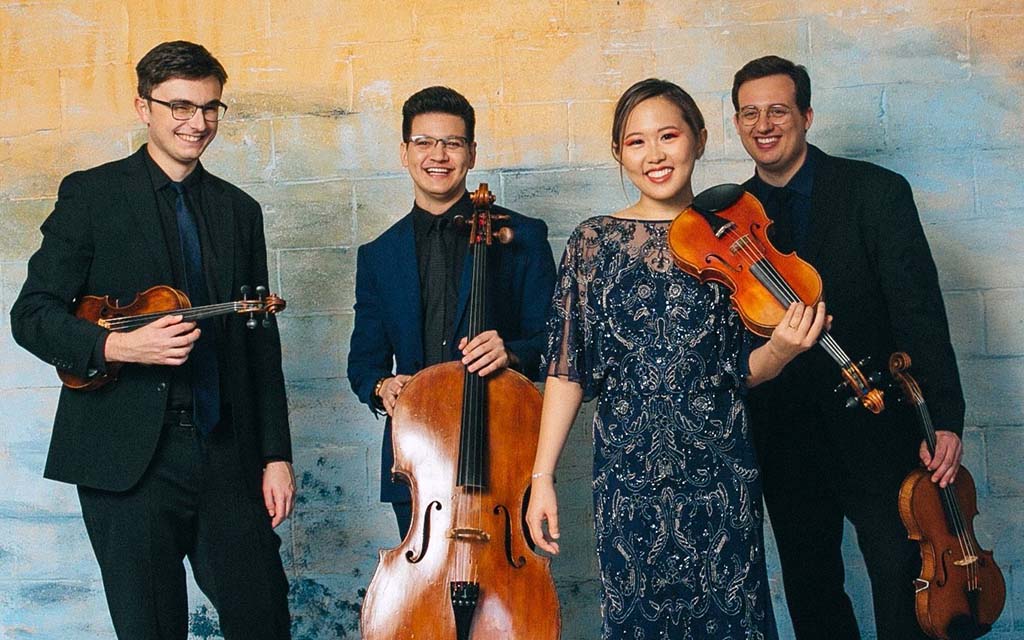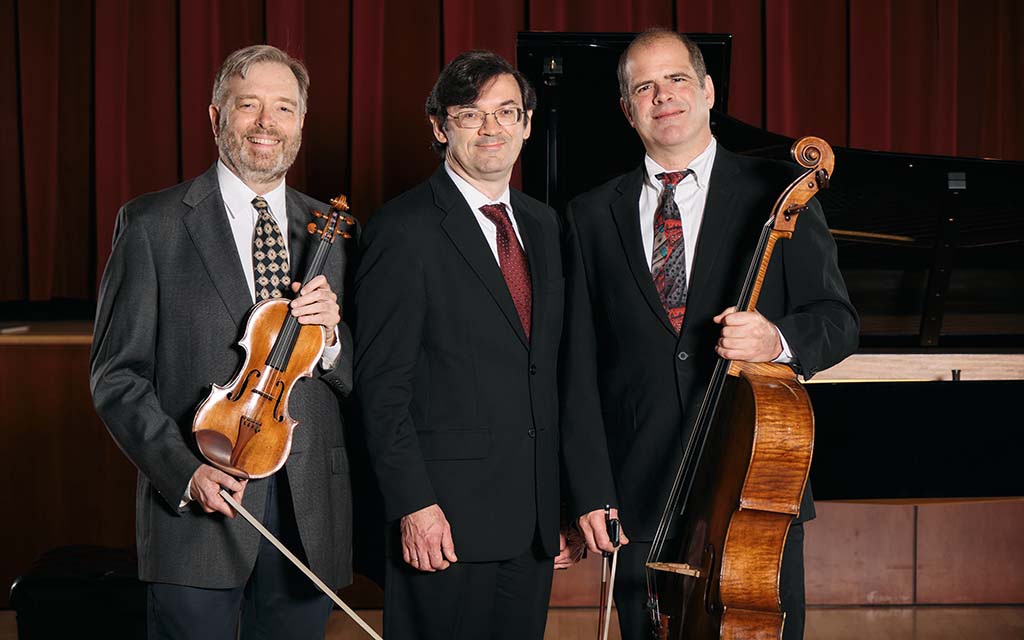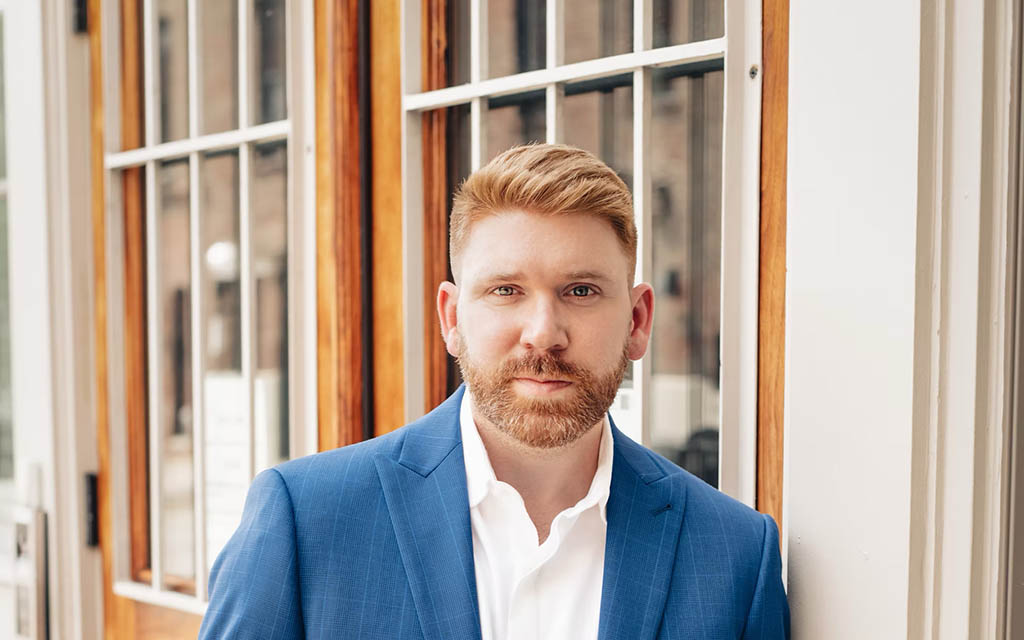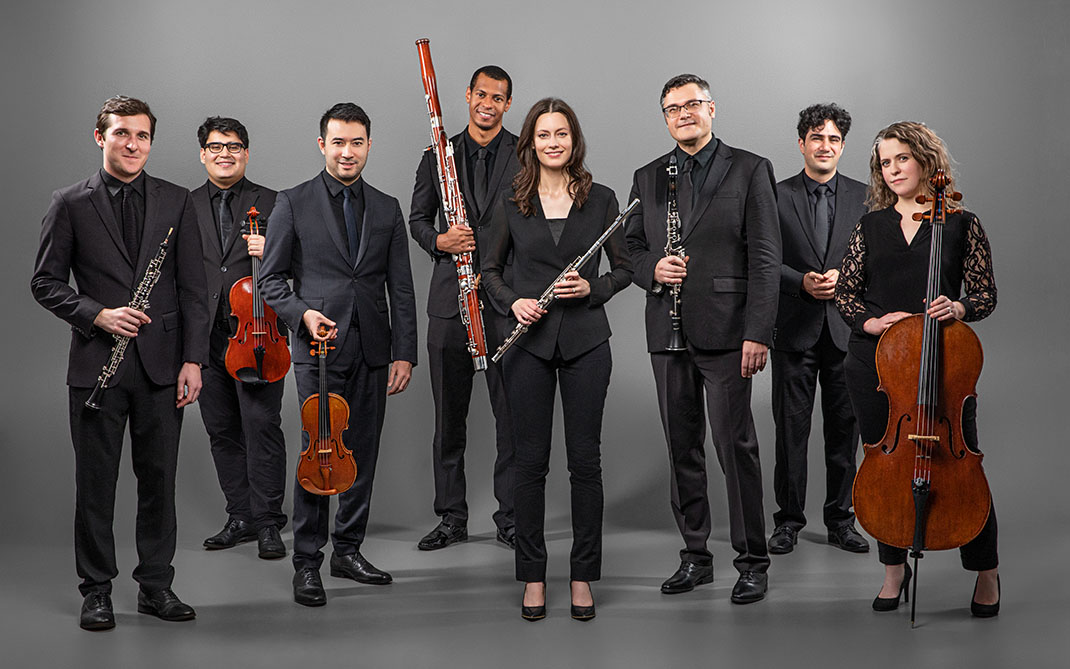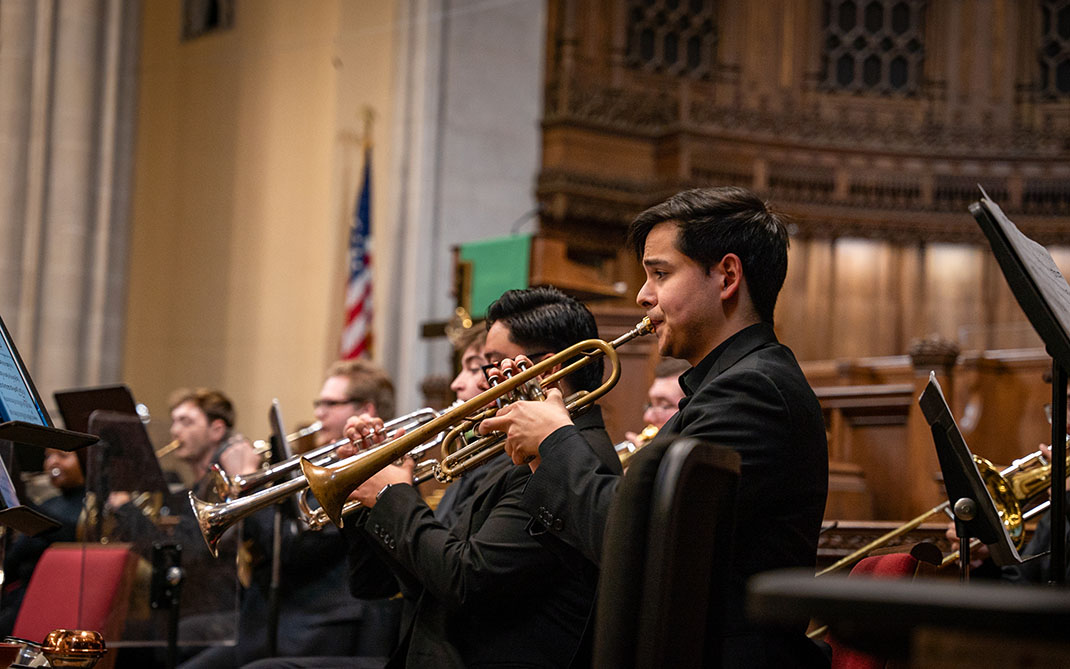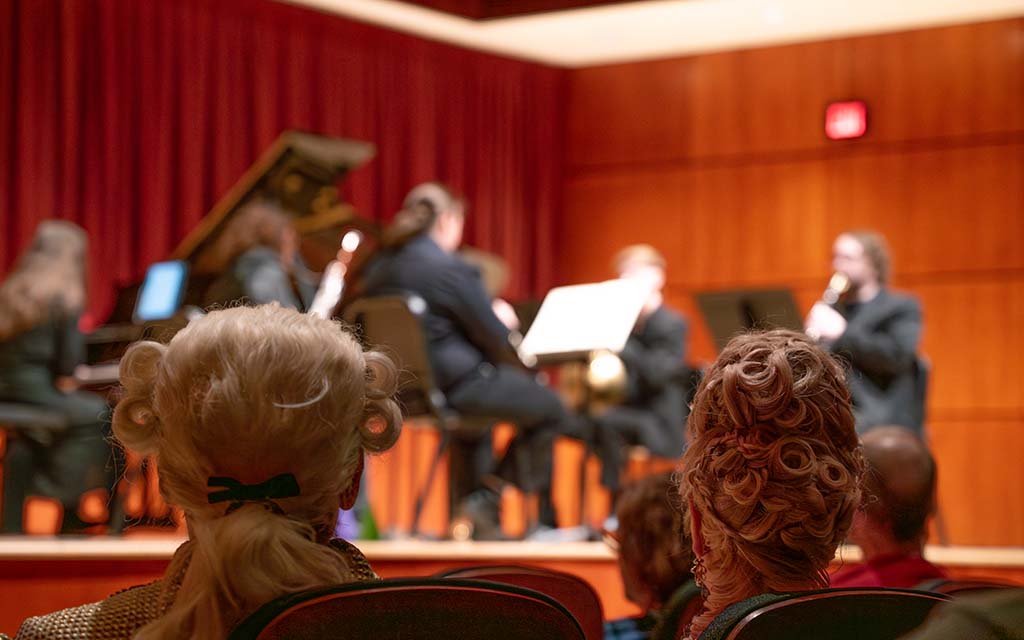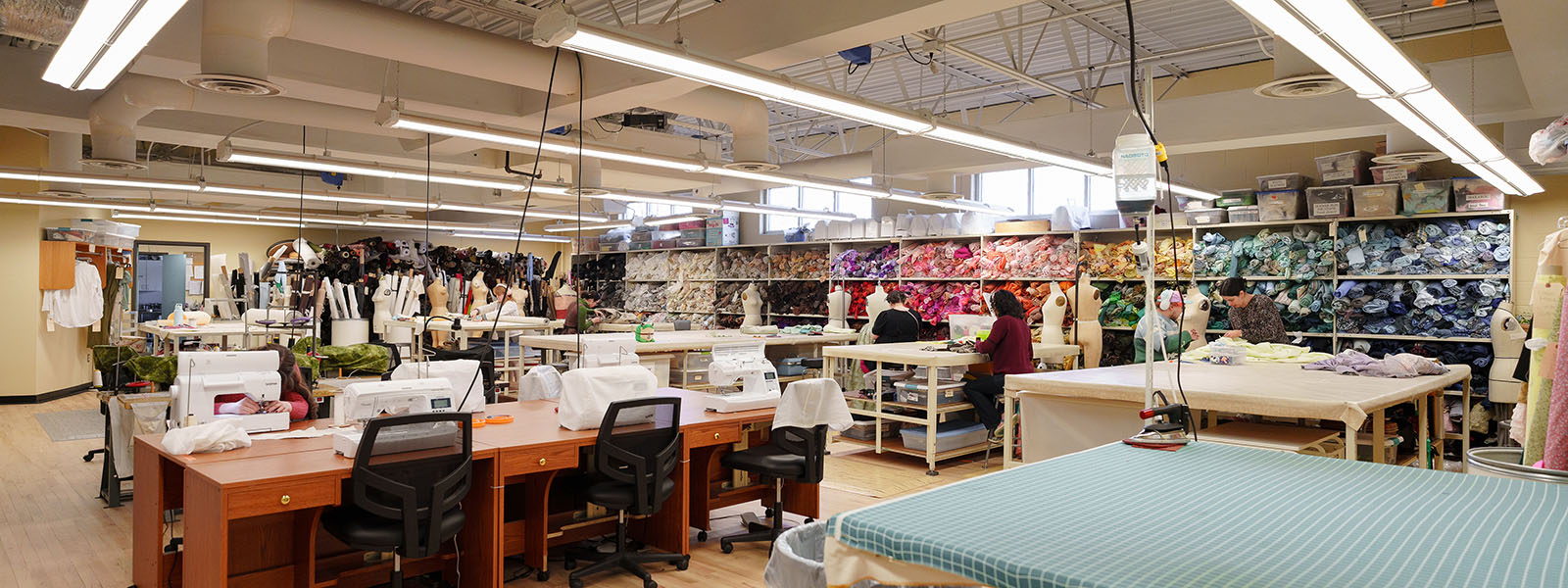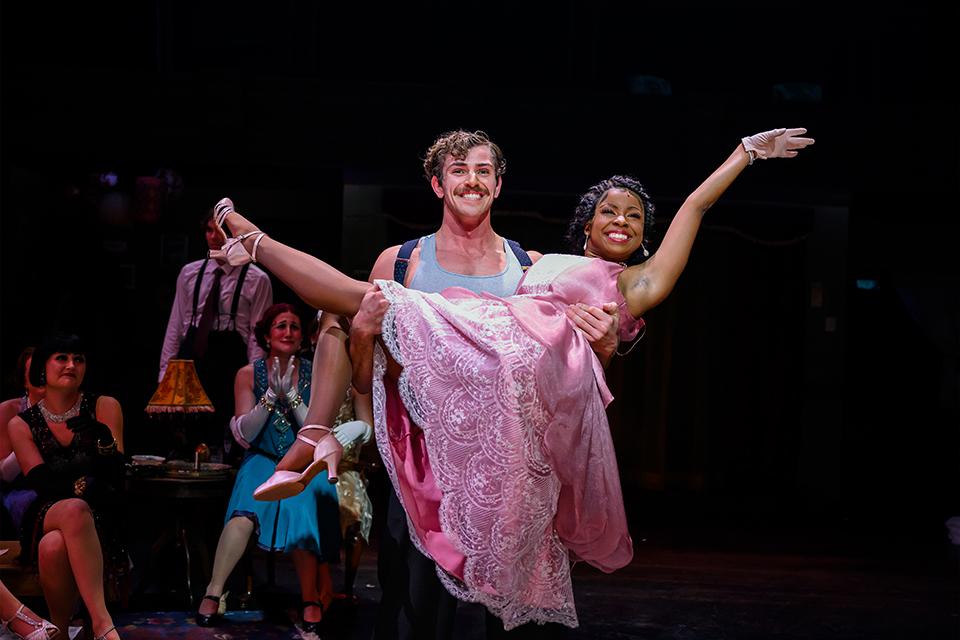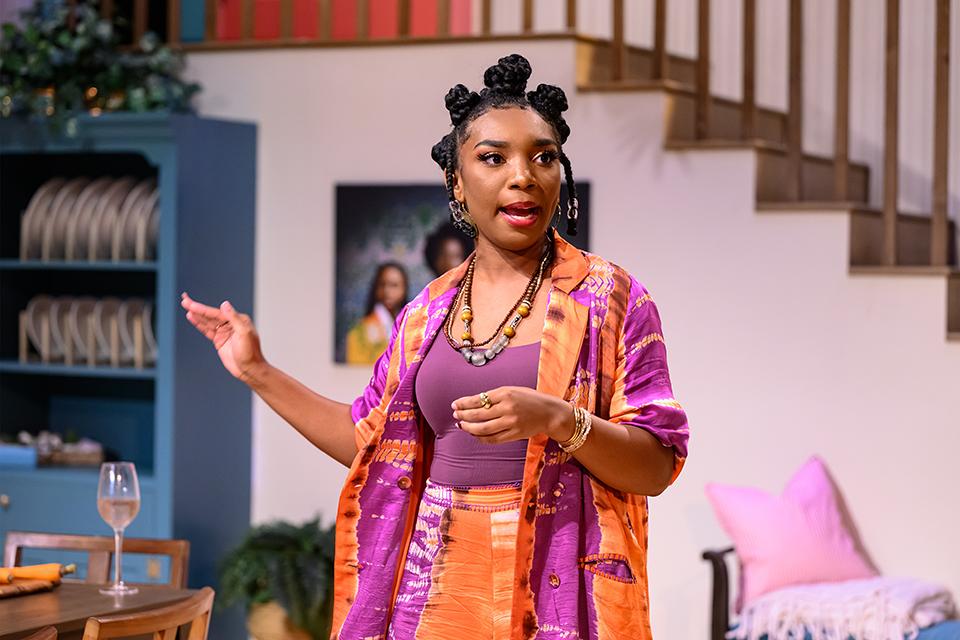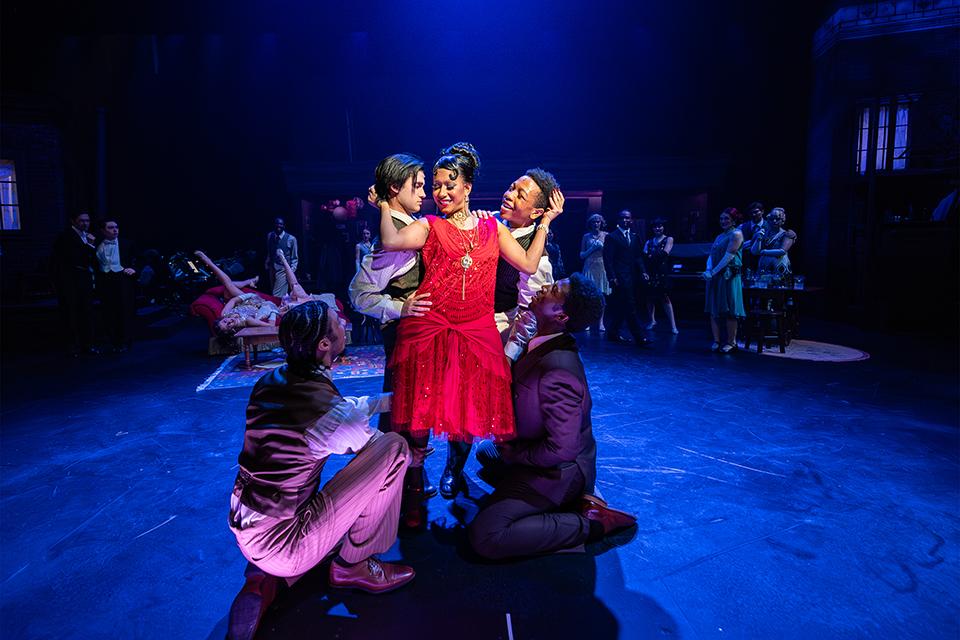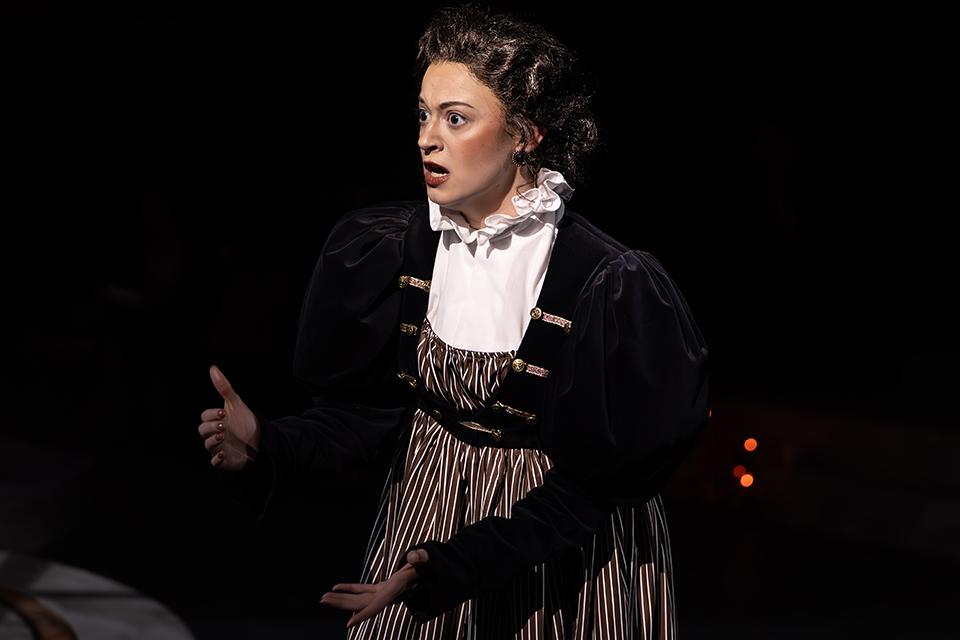The art of costume design: Inside Bill Brewer’s vision at UNCSA
As a young boy growing up in Southeast Kansas, Bill Brewer fell in love with art and theatre. Not realizing how those two passions might intertwine to form a career, he pursued acting in high school before uncovering his professional calling in college. The road ahead took him to Pennsylvania, California, Minnesota, Florida and, ultimately, North Carolina — where he has led student artists in the School of Design & Production as director of costume design for nearly 20 years.
The department includes a Costume Design & Technology B.F.A. concentration and two tracks for graduate-level studies: Costume Design and Costume Technology. The costume design track has a long-standing spot on the Hollywood Reporter’s list of the top 10 costume design programs worldwide, and Brewer says between one third and half of prospective costume students discover UNCSA through the list each year. The concentration boasts alumni who work all over the entertainment industry in theater, film and television with the most notable being recent Academy Award winner Paul Tazewell.

Director of Costume Design Bill Brewer. / Photo: G. Allen Aycock
Costume design is complex, yet energizing, requiring layers of research and analysis — and it’s at the heart of human interaction. “Society often makes decisions about who a person is based solely on how they look,” Brewer explains. “In the theater or even on the screen, often the audience sees a character before they ever speak. They make assumptions based on visuals.” Sometimes costume designers want to reinforce those first impressions, or they may guide the audience in another direction because the character is dishonest or has ulterior motives. It’s a compelling piece of visual storytelling — one that Brewer has perfected during his career.
From student to educator
After receiving undergraduate and graduate degrees from Emporia State University’s School of Visual + Performing Arts, Brewer wasn’t certain how to establish himself in a design career. “I did the worst thing you can do right out of school — I immediately started teaching,” he recalls. A few years later he enrolled in Carnegie Mellon’s Costume Design program, where he earned an M.F.A. before returning to teaching. A move across the country to San Francisco provided the opportunity to step out of the classroom and dive into hands-on design work for companies like Berkeley Repertory Theatre, San Francisco Ballet, San Francisco Opera, Lucasfilm and more.
And though Brewer has returned to education for much of his career, his personal work in costume design is ongoing and well-recognized. His designs have been featured in the United States’ exhibit at the Prague Quadrennial and have been selected from USITT’s Design Expo for publication in their Theatre Design and Technology journal on multiple occasions. He has contributed to the arts community in North Carolina, across the United States and abroad.
But it is his contributions in the classroom that have earned him the respect of nearly two decades of UNCSA students and alumni. “I first came to UNCSA as a guest artist,” Brewer recalls, “and the moment a full-time position became available I was notified by no less than a dozen people.” UNCSA is a school unlike any other, he adds. The School of Design & Production stands alone as a conservatory — the only school of its kind in the nation to not be tucked underneath a theatre or drama program. It was an easy decision to apply and later to say ‘yes’ to a job offer.
“I entered UNCSA during a time of development and growth, with the opportunity to update and evolve the costume design curriculum,” says Brewer. He has been fortunate to see many iterations of the program over the years. While the foundational skills he teaches have stayed the same, the program has adapted to evolving technologies and industries, like the addition of digital rendering in costume design. “Drawing and painting through a computer-based program was not prevalent 20 years ago but it has been incorporated over time,” he says. “We offer digital classes now, but we still hold on to traditional drawing and painting as well. When it comes down to it, it doesn't matter whether you are drawing on paper or on a computer. You still have to be able to draw. To a designer, drawing skills are communication skills.”
Designing across disciplines
At UNCSA, Brewer has discovered abundant opportunities for collaboration with the other conservatories on campus. The Costume Design & Technology department supports mainstage Drama productions, undergraduate opera scenes in the School of Music’s A.J. Fletcher Opera Institute and the School of Filmmaking’s Fourth-Year Films (a partnership Brewer excitedly brought to fruition). Though the School of Dance houses the Dance Costume Shop to support their performances, some of Brewer’s students who are interested in dance costuming work in the shop as part of their production assignments.
The variety of design prospects across campus provides a well-rounded education for the more than 40 students in the program. Brewer offers the recent Drama production “The Wild Party” as an example of the uniqueness of design work available to them: The show is set in the 1920s, which calls for period costumes, but the show’s choreography was more contemporary. This provided a unique challenge for the costume designers — costumes needed to reflect 1920s style but be able to function for much more modern movement. “If we’ve done our job well, the audience won’t notice a difference,” he says.
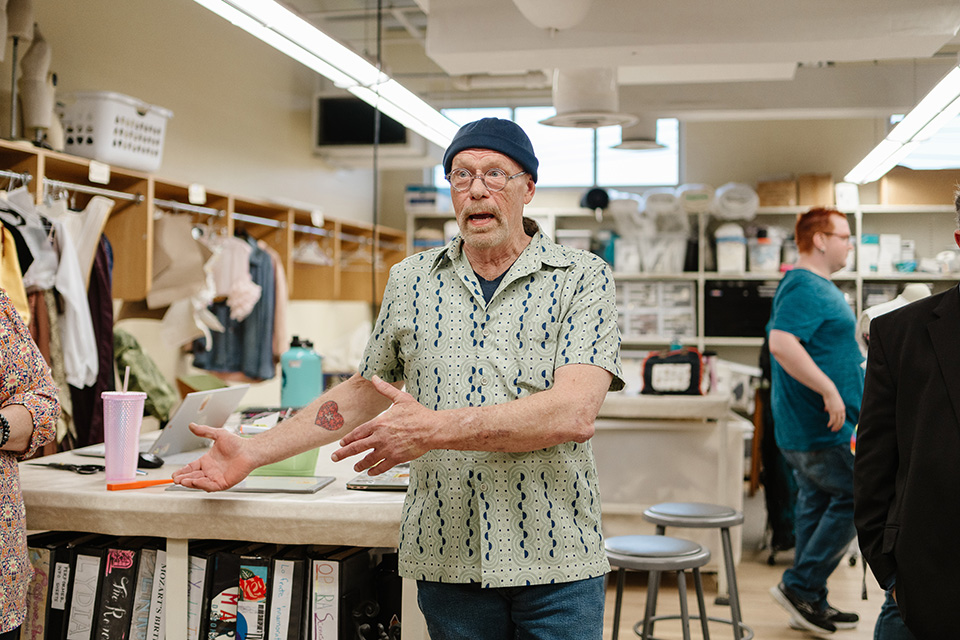
Brewer giving a tour of the UNCSA Costume Shop. / Photo: Jen Scheib
And in all costume design work, whether seemingly straightforward or more nuanced, design is about making choices. “It’s not always about creation,” says Brewer. “It’s about making choices that support the telling of the story and then assembling those choices together to create the full design process.”
The designer’s job starts early with an analysis and research phase. “You first must research the period in depth… not only what the clothes looked like but also the modes and mannerisms of the period,” explains Brewer. “What was the period like politically, socially, economically?” The designer also meets with the director to discuss a high-level approach along with specific character details like their interactions and relationships. From there, imagery is assembled and presented to the director before selecting fabrics, resourcing (i.e. purchasing some items like shoes or accessories directly from vendors) and preparing to move along toward fabrication.
Methods may shift ever-so-slightly depending on the discipline for which a costume is being created, but the traditions of the design process always stay the same.
Teaching the next generation
“Working with young people keeps you young,” says Brewer. Every year is different as he gets to know a new group of students, meeting them where they are with their learning styles and interests. For example, he rotates the plays used in his theoretical classwork each year, making selections based on each new group of young artists. “Successful educators are constantly changing and evaluating the material they’re teaching,” says Brewer. “But more importantly, it’s the way in which the material is presented. I could not possibly be successful in teaching if I taught today the way I did 20 years ago, or even five years ago.”
Success is not to be confused with fame. It is about building a career doing what you love, doing it well and contributing to the bigger picture of art.
Bill Brewer
And Brewer takes this to heart. Next school year, he’ll begin implementing a new delivery format in his design classes. Once undergraduate students select their focus in costume design, they will join a consortium and finish their last two years of study in a classroom that includes both third- and fourth-year students working on different projects at different levels. The hope, Brewer explains, is that the cross-pollination will further the education and scope of understanding for each student.
As Brewer reflects on the growth and evolution of costume design at UNCSA, the success of his students and program alumni brings him the most joy. And while some have received recognition at the highest level for their work (like costume design alumnus who Paul Tazewell recently took home an Academy Award for his work on “Wicked”), Brewer has his own definition of success: “Success is not to be confused with fame. It is about building a career doing what you love, doing it well and contributing to the bigger picture of art.”
May 07, 2025
